On occasion, ‘the itch’ to experience the boxing experience calls others to enter the ropes. Primarily not as a challenger, but more as an observer. Peeking inside from outside the ropes is not sufficient. They need to get inside either once or now and then.
The drive is not to prove something as it is to be a ‘part of the boxing world.’ But there is more to the world inside the ropes than merely putting on the gear and getting inside. As I noted of my first experiences of witnessing boxing and getting inside the ropes, I felt I was drawn into this experience. That I was called to box. And after this surrender, I immediately felt safe and at home within the boundaries of the ropes.
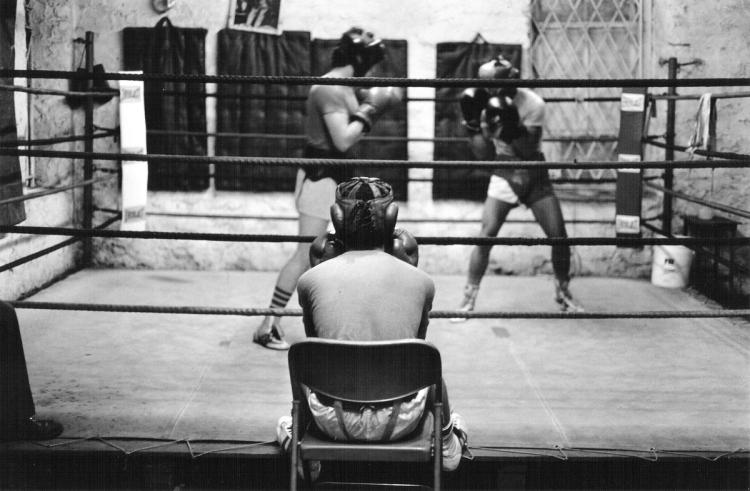
Here are a few guys, writers, who for their own reasons, needed a closer view than being a spectator to the action inside the ropes. They are not the first, and they will not likely be the last. For despite what an average guy will tell you, deep down inside he would like to do more than watch the action. He wants to be a part of the action.
At least I did.
George Plimpton
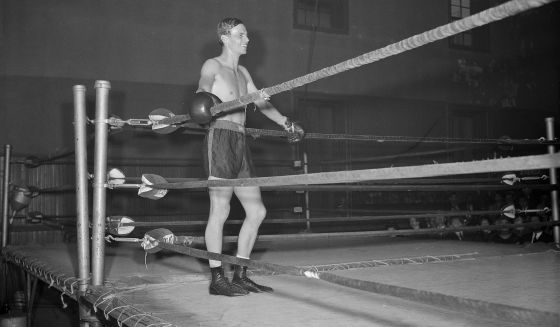
George Ames Plimpton (March 18, 1927 – September 25, 2003) was an American journalist, writer, literary editor, actor and occasional amateur sportsman. He is widely known for his sports writing and for helping to found The Paris Review, as well as his patrician demeanor and accent. He was also famous for ‘participatory journalism’ which included competing in professional sporting events. For example Plimpton sparred for three rounds with boxing greats Archie Moore and Sugar Ray Robinson, while on assignment for Sports Illustrated.

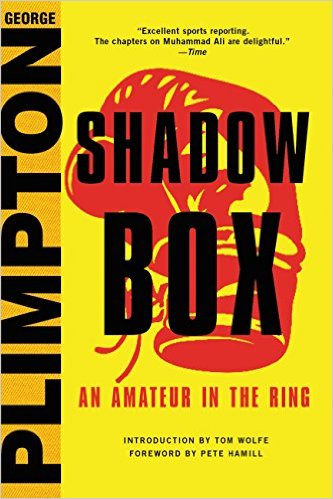
In 1959 George Plimpton challenged a mature, Archie Moore, to three rounds of sparring. Moore was light heavyweight champ from 1952-1962 and a cunning ring presence. His record at the time of Plimpton’s challenge was 171 win; 22 loss; 9 draw (123 KOs). Plimpton’s record was 0-0-0 (0 KOs), but he wanted material for a Sports Illustrated feature, which was later included in his book Shadow Box (1977), and that meant taking a risk. Shadow Box is one of Plimpton’s most engaging studies of professional sport, told through the eyes of an inquisitive and astute amateur. From the gym, the locker room, ringside, and even in the harsh glare of the ring itself, Plimpton documents what it is like to be a boxer, an artist of mayhem.

3 round with boxer Archie Moore
Norman Mailer

Norman Kingsley Mailer (January 31, 1923 – November 10, 2007) was an American novelist, journalist, essayist, playwright, film-maker, actor, and liberal political activist. His novel The Naked and the Dead was published in 1948 and brought him renown. The Fight (1975), an account of Muhammad Ali’s 1974 defeat in Zaire of George Foreman for the heavyweight boxing championship.
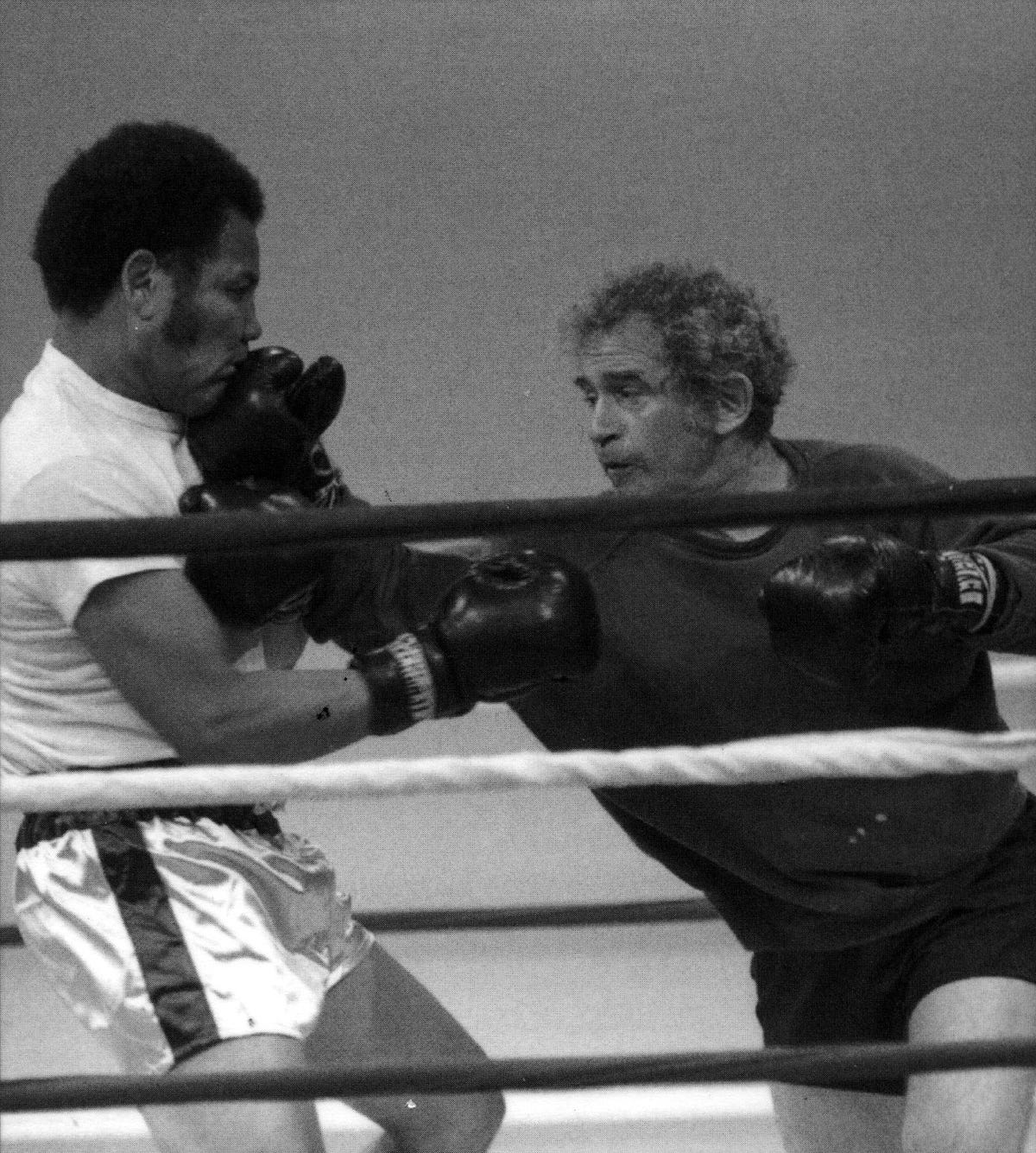

Ernest Hemingway
As for his “boxing,” we would be wise not to believe him. He may have “been there,” but the real boxers he encountered, and tried to spar with, would never testify he knew what he was doing.

Ralph Ellison said of one of his literary heroes: “When [Ernest Hemingway] describes something in print, believe him; believe him even when he describes the process of art in terms of baseball or boxing; he’s been there.” As for his “boxing,” we would be wise not to believe him. He may have “been there,” but the real boxers he encountered, and tried to spar with, would never testify he knew what he was doing.

Ernest Hemingway (July 21, 1899 – July 2, 1961) was an American novelist, short story writer, and journalist. He also liked boxing. He had a boxing ring built-in the backyard of his Key West home, right next to the pool, so that he could spar with guests. He dedicated time not spent writing to boxing, even refereeing matches at the local arena. Hemingway’s was known for using boxing analogies in interviews, as well as for attempting to teach the poet Ezra Pound to box during his years in Paris.
Several of his short stories reflect his love for the sport, including short stories:
- Fifty Grand is told in the first person by Jerry Doyle, the trainer for welterweight champion Jack Brennan. There was a time when Brennan was a very good fighter. “He certainly did used to make the fellows he fought hate boxing,” Doyle notes. But Brennan is now tired and old. He has looked awful in training camp. In Doyle’s words, “He just hasn’t got anything inside any more.”

- The Killers Nick Adams, a famous Hemingway character from his short stories, crosses over from teenager to adult. The basic plot of the story involves a pair of criminals who enter a restaurant seeking to kill a boxer, a Swede named Ole Andreson, who is hiding out for reasons unknown, possibly for winning a fight.

- The Battlers Nick Adams, a young man of roughly twenty years of age, encounters an older gentleman named Ad Francis, a once-famous boxer who claims to have gone “crazy” after his life as a fighter.

Hemingway’s friend and sometime sparring partner, novelist Morley Callaghan said, “we were two amateur boxers. The difference between us was that he had given time and imagination to boxing; I had actually worked out a lot with good fast college boxers.” From The Life and Times of Morley Callaghan:
On a hot Paris afternoon in 1929, two men square off in a boxing ring.
One of them is Ernest Hemingway, the tough-talking, hard-drinking American writer. The other is Morley Callaghan, the young Canadian writing sensation.
Rod Serling
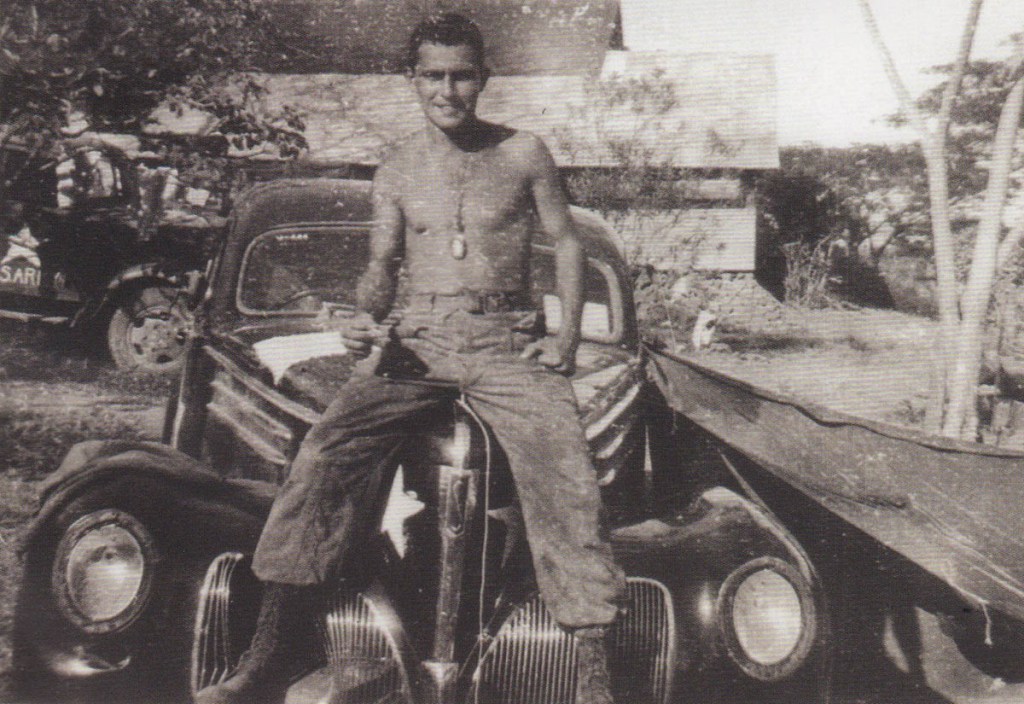
“Over the next year of paratrooper training during World War II, Serling and others began boxing to vent aggression. He competed as a flyweight and had 17 bouts, rising to the second round of the division finals before being knocked out. He was remembered for ‘berserker style’ and for ‘getting his nose broken in his first bout and again in last bout.’ He tried his hand at the Golden Gloves, with little success.” Wikipedia
Requiem for a Heavyweight (1956) and the Twilight Zone’s Big Tall Wish (1960) and Steel (1963, written by Richard Matheson) are boxing theme teleplays for which Rod Serling is best known. Although not a great boxer, Rod used his pen to write many memorable human interest stories during a period which is generally referred to as television’s ‘Golden Age.’ In this arena he is recognized as an undefeated champion.

Thom Jones

Illinois born Thom Jones was a short-story writer who rocketed in 1991 became famous when the New Yorker published his Vietnam War story The Pugilist at Rest. Jones’s father was a schizophrenic who killed himself. He was also a boxer, and arranged lessons for Jones from a young age. When Jones enlisted as a Force Recon Marine in the 1960s, a boxing prevented him from being shipped out to Vietnam with the rest of his platoon. Luckily so as all but one of them would be killed in a military action. Jones, badly beaten by a fellow soldier, was discharged from the army with temporal lobe epilepsy.
“The sort of boxing Theogenes practiced was not like modern-day boxing with those kindergarten Queensberry Rules. The two contestants were not permitted the freedom of a ring. Instead, they were strapped to flat stones, facing each other nose-to-nose. When the signal was given, they would begin hammering each other with fists encased in heavy leather thongs. It was a fight to the death. Fourteen hundred and twenty-five times Theogenes was strapped to the stone and fourteen hundred and twenty-five times he emerged a victor.“


Short Story Writers
From bare knuckle to gloved bouts, Classic Boxing Stories contains the work of dozens of writers about a sport that captured their interest and imagination, although their participation was only through their characters:
- O. Henry
- H. C. Winter
- Sir Arthur Conan Doyle
- Ring Lardner
- Jack London
- P. G. Wodehouse
- Octavus Roy Cohen
- And others.
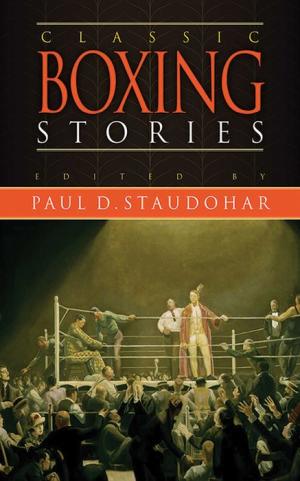

You must be logged in to post a comment.